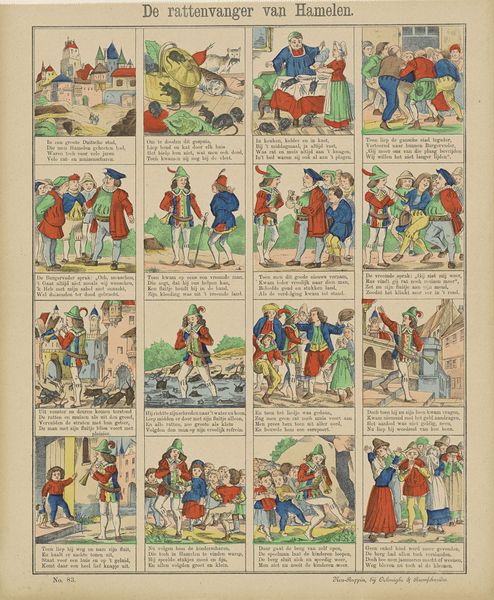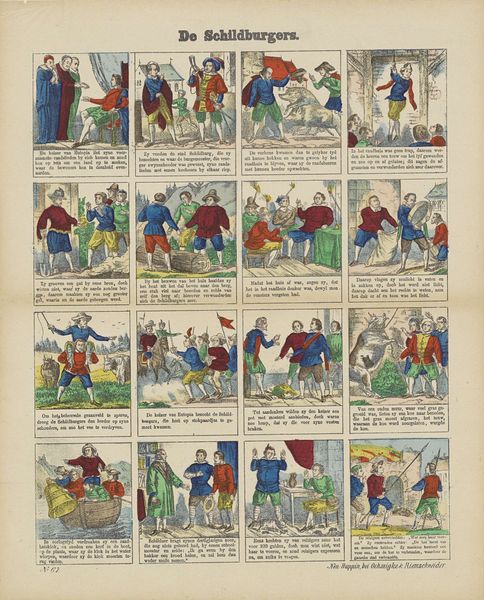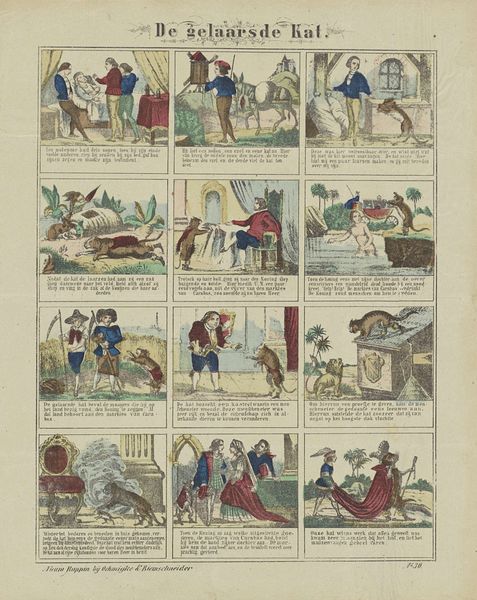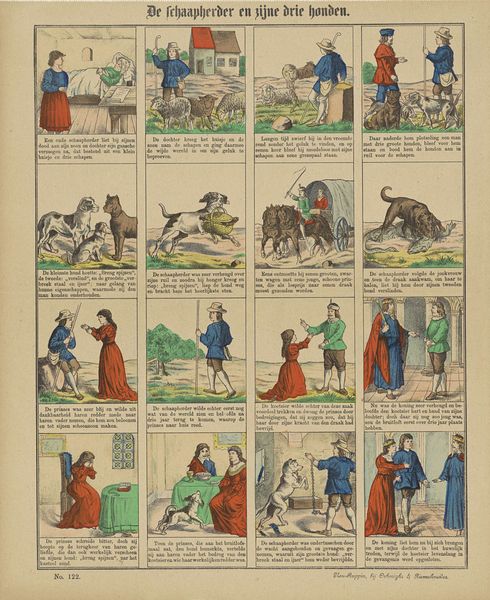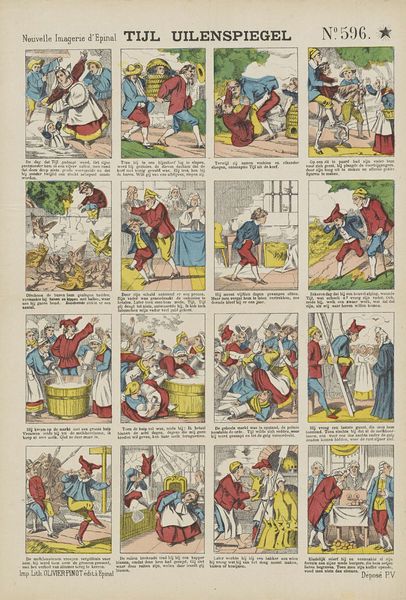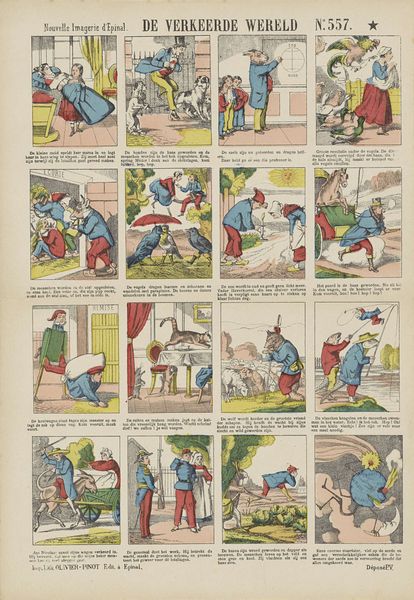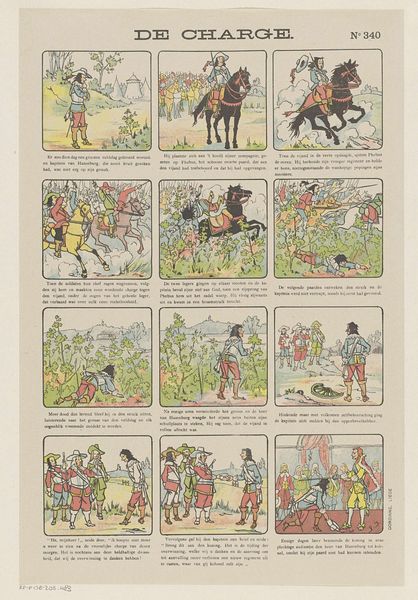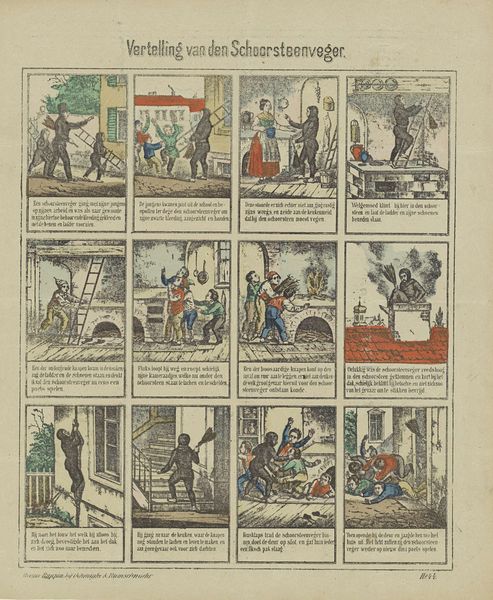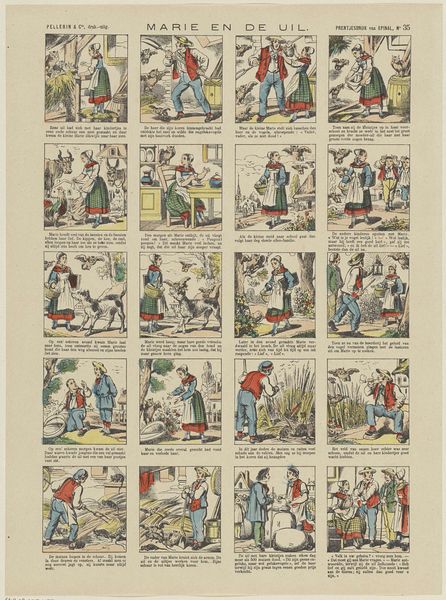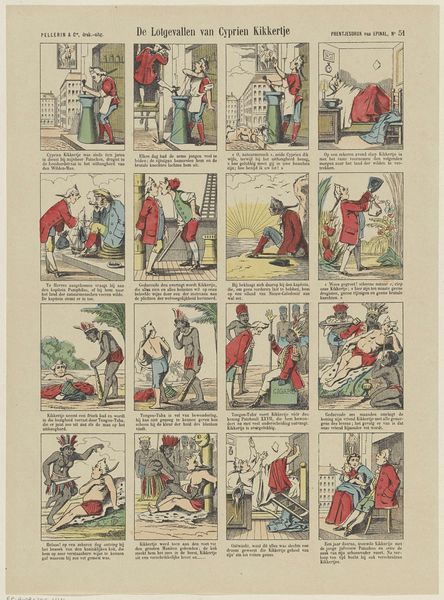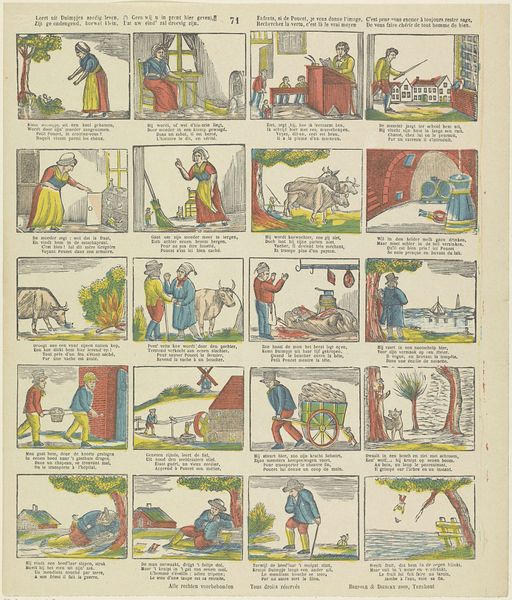
#
comic strip sketch
#
narrative-art
# print
#
comic
#
history-painting
Dimensions: height 409 mm, width 337 mm
Copyright: Rijks Museum: Open Domain
Curator: This print, titled "De lotgevallen van Robinson Crusoë," offers a series of vignettes from the classic tale. It was created between 1828 and 1937 by Oehmigke & Riemschnieder. Editor: Immediately, I’m struck by how the image sequences build on each other. There's almost a sense of animation—though quite static. The coloring seems utilitarian. Curator: The artist employs a fairly rudimentary printmaking technique, suggesting a wide availability and affordability. Notice how each frame utilizes limited color and rather bold lines, simplifying the narrative for quick comprehension, intended for a mass audience consuming popular literature through visual means. Editor: I find myself interpreting each tableau. Observe in the top left, the shipwreck from which Robinson is spared sets in motion this adventure. This sequence seems to highlight the theme of man versus nature, his reliance on skill for survival. It strikes me, the imagery also emphasizes the religious idea of gratitude with depictions of him praising God! Curator: Absolutely, we see recurring symbolic actions--construction of shelter, encounters with wildlife, which underline essential struggles of both material and spiritual resourcefulness. Think of the paper it is printed on; probably newsprint, inexpensive and made from recycled materials, reflecting accessibility of adventure to anyone who purchases the printed material. Editor: Look at the eighth vignette with Crusoe alongside the native! The moment marks more than companionship. Symbolically it confronts colonial encounters, which prompts viewers to wrestle with our modern awareness to ideas related to racial, and cultural biases from these eras of exploration. Curator: Examining this as print culture—that would influence understandings of cultural interactions across a spectrum beyond any initial telling alone! Mass media democratized art ownership. Editor: Seeing this narrative spread out tells a compelling story itself. I’m drawn to considering the journey and emotional impact to individuals reading then; or to what extends do we find similar sentiments relevant for modern perspectives on these universal tales of being alone together on this planet! Curator: For me, I value that we have considered printing processes within context; where printed material itself could serve either propaganda machine as well or tools intended to bridge empathy among audiences!
Comments
No comments
Be the first to comment and join the conversation on the ultimate creative platform.
